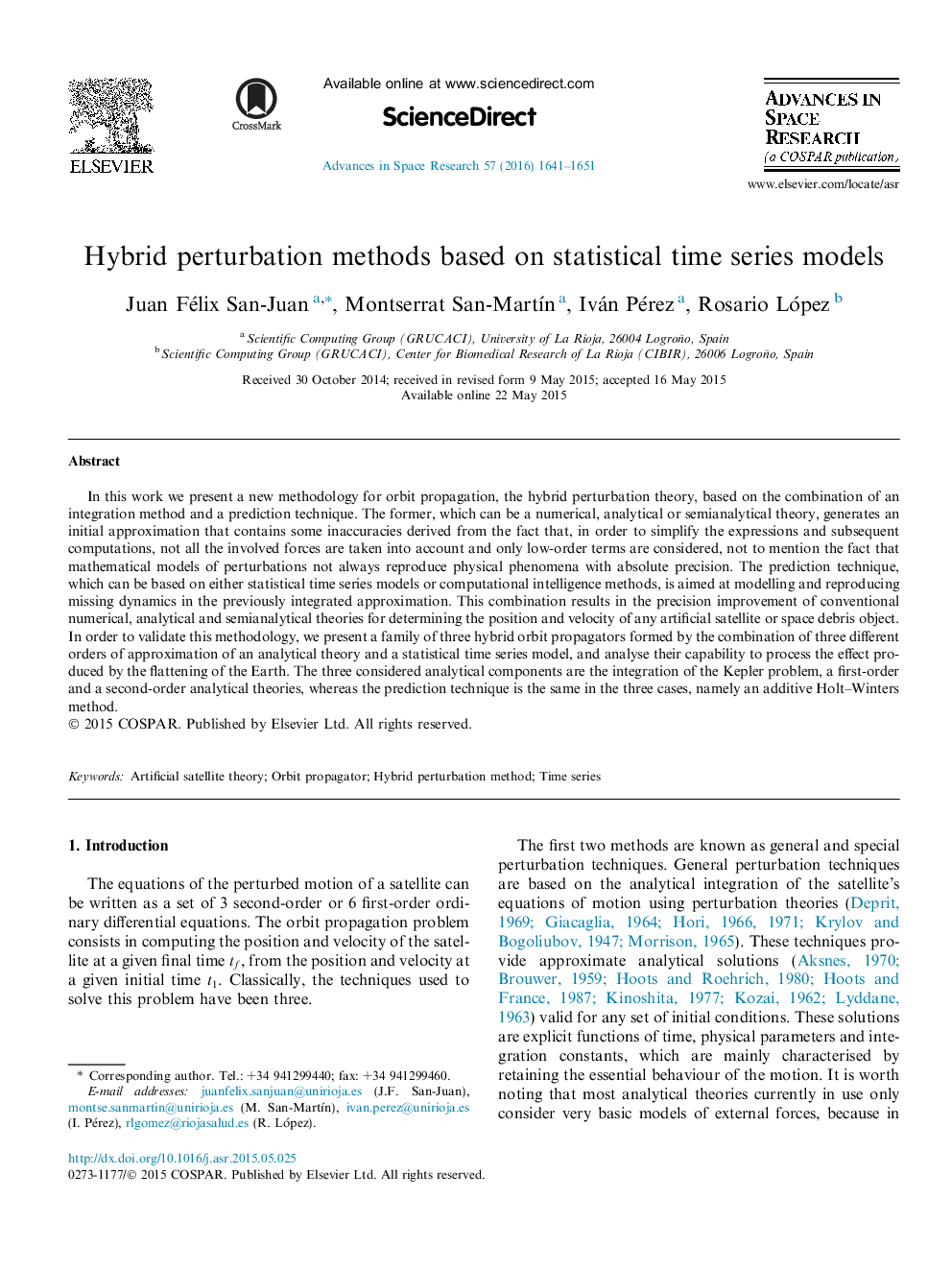| Article ID | Journal | Published Year | Pages | File Type |
|---|---|---|---|---|
| 1763379 | Advances in Space Research | 2016 | 11 Pages |
Abstract
In this work we present a new methodology for orbit propagation, the hybrid perturbation theory, based on the combination of an integration method and a prediction technique. The former, which can be a numerical, analytical or semianalytical theory, generates an initial approximation that contains some inaccuracies derived from the fact that, in order to simplify the expressions and subsequent computations, not all the involved forces are taken into account and only low-order terms are considered, not to mention the fact that mathematical models of perturbations not always reproduce physical phenomena with absolute precision. The prediction technique, which can be based on either statistical time series models or computational intelligence methods, is aimed at modelling and reproducing missing dynamics in the previously integrated approximation. This combination results in the precision improvement of conventional numerical, analytical and semianalytical theories for determining the position and velocity of any artificial satellite or space debris object. In order to validate this methodology, we present a family of three hybrid orbit propagators formed by the combination of three different orders of approximation of an analytical theory and a statistical time series model, and analyse their capability to process the effect produced by the flattening of the Earth. The three considered analytical components are the integration of the Kepler problem, a first-order and a second-order analytical theories, whereas the prediction technique is the same in the three cases, namely an additive Holt-Winters method.
Keywords
Related Topics
Physical Sciences and Engineering
Earth and Planetary Sciences
Space and Planetary Science
Authors
Juan Félix San-Juan, Montserrat San-MartÃn, Iván Pérez, Rosario López,
